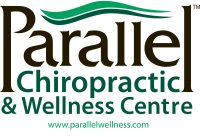Office Ergonomics: Is Your Office Causing You Pain?
First, what is ergonomics? “In essence it is the study of designing equipment and devices that fit the human body and its cognitive abilities.” (Wikipedia) Proper ergonomics minimize physical stress on your body—a very important consideration as many Albertans spend eight or more hours sitting at a desk staring virtually non-stop at a computer.
Second, how can ergonomics cause you to feel strain and pain? If your chair, keyboard, computer monitor, etc. are not positioned properly, your body is forced to deal with stress that could lead to neck pain, low back pain and other physical issues.
How can you create a good ergonomic workspace?
- Position your chair at a height where your feet are comfortably positioned flat on the floor, with your knees bent at a 90 degree angle. Improper positioning and support of your lower body can lead to low back strain, pain and injury.
- Make sure your computer monitor is at eye level to reduce neck strain.
- Use the hands-free/speaker option or a headset rather than holding your telephone between your ear and shoulder, which can lead to neck and shoulder strain.
- Your keyboard tray should be positioned slightly below the height of your elbows, creating a negative slope that will allow your wrists to rest in a neutral position and help you avoid repetitive stress injuries.
- Use an ergonomic keyboard to allow your wrists to rest at a more natural angle than traditional keyboards to prevent strain in your wrists and arms.
It is also important to remember to take regular breaks throughout your workday to stretch. Try to stand up or walk around every 45 minutes. This can be incorporated into your work routine by taking phone calls, filing or reading while standing up rather than sitting. You could also deliver messages to a co-worker in person rather than emailing it.
What to do if you are already experiencing pain and strain from poor office ergonomics?
When you feel tension or stress in certain area of your body like the neck, back and shoulders, change positions or try some gentle stretching exercises like shoulder shrugs.
If you experience back pain related to poor ergonomics, consult your chiropractor. Find a chiropractor

